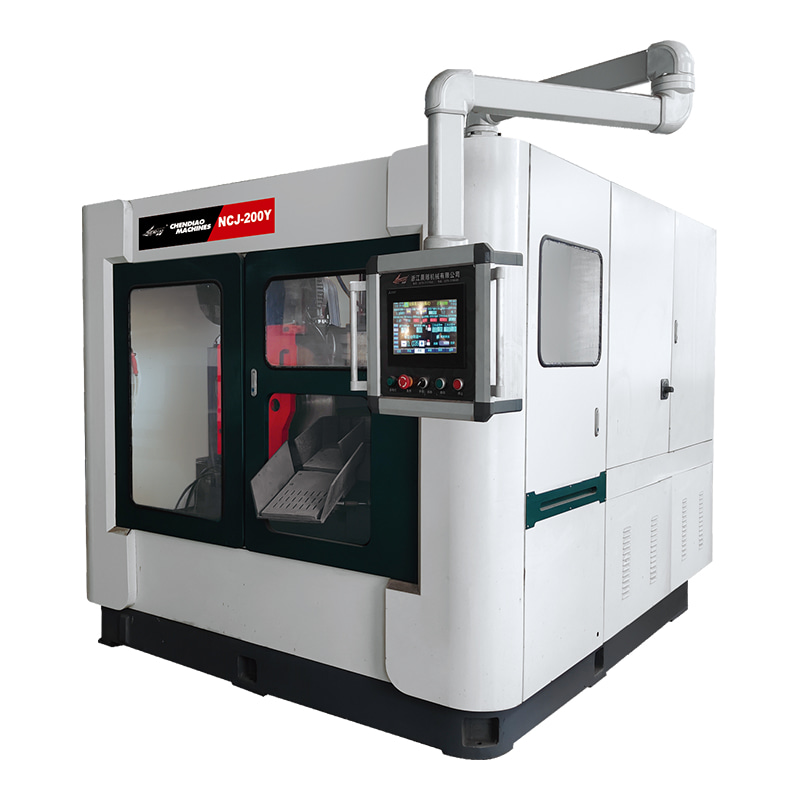NCJ-150 Fully Automatic High-Speed Metal Circular Saw Machine Steel Rod Blanking Machine Sawing Machine
Cat:Hinged Circular Saw Machine
Highly rigid body structure with advanced clamping device, environment...
See DetailsIntroduction: The Safety Imperative in High-Speed Metal Cutting
High-speed cutting operations are common in modern aluminum fabrication workshops, as they help improve efficiency and output. However, with increased blade rotation and material feed rates comes an elevated risk of accidents and mechanical failures. For any aluminum plate cutting circular saw machine, ensuring operator safety and machine reliability during high-speed cutting is paramount. This article explores the multiple layers of safety mechanisms integrated into such machines to protect users and maintain safe working conditions.

Enclosed Cutting Zones and Blade Guarding
One of the critical safety features in any circular saw machine is the blade enclosure. In high-speed cutting, the rotation speed of the blade can exceed thousands of revolutions per minute. Most machines are equipped with full or semi-enclosed blade guards made of reinforced steel or impact-resistant polycarbonate. These guards prevent direct contact with the blade and contain debris or aluminum chips that may be ejected during operation. Automatic blade covers that retract only during cutting further enhance protection.
Emergency Stop and Lockout Systems
Modern machines are designed with accessible emergency stop buttons and lockout/tagout (LOTO) systems. These allow operators to immediately halt the machine in the event of an anomaly, such as a blade jam, power surge, or misfeed. Some models also include dual emergency switches—one near the operator and another at the control point—for redundancy. Lockout systems ensure that maintenance or cleaning work is performed only when the machine is fully powered down, reducing risk.
Anti-Kickback and Material Stabilization Systems
Kickback—the sudden reverse movement of the material or blade—poses a serious hazard in high-speed cutting. To address this, aluminum plate cutting machines include anti-kickback mechanisms that stabilize both the material and the blade. These may include roller clamps, hydraulic holding arms, or vacuum-based material stabilizers. Additionally, dual-sided feed rollers or adjustable clamps help ensure that the aluminum plate remains securely in place throughout the entire cutting process.
Heat Management and Fire Prevention Measures
High-speed blade rotation creates substantial frictional heat, which can pose a fire risk, especially with fine aluminum particles in the air. To mitigate this, machines often incorporate mist cooling or liquid-based cooling systems that lower both blade and material temperatures. Heat-resistant materials are used in key areas to prevent structural warping or combustion. Spark arrestors and chip extractors also help reduce fire hazards by minimizing the accumulation of flammable debris.
Intelligent Monitoring and Fault Detection
Many advanced machines are now equipped with sensors and software that constantly monitor cutting speed, blade condition, motor load, and temperature. When a fault is detected—such as excessive vibration, overheating, or abnormal torque—the system can automatically reduce speed, pause the cutting process, or alert the operator. This proactive feedback loop helps catch problems before they become dangerous, making the machine significantly safer during high-speed operations.
Operator Training and Safety Protocol Integration
Finally, even the advanced machine depends on well-trained personnel to operate safely. Most manufacturers recommend comprehensive operator training and standardized safety protocols such as pre-use inspections, personal protective equipment (PPE) requirements, and operational checklists. Integration of safety interlocks—where the machine won’t operate unless all guards are in place—further enforces correct procedures.
Conclusion: A Multi-Layered Approach to Safety
Safety during high-speed cutting with an aluminum plate cutting circular saw machine is achieved through a combination of mechanical design, intelligent control systems, thermal management, and rigorous operator protocols. By incorporating these layers of protection, manufacturers ensure that high-speed efficiency does not come at the cost of operator well-being or workplace safety.